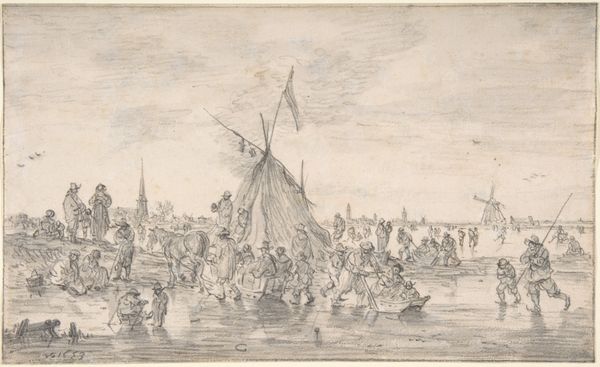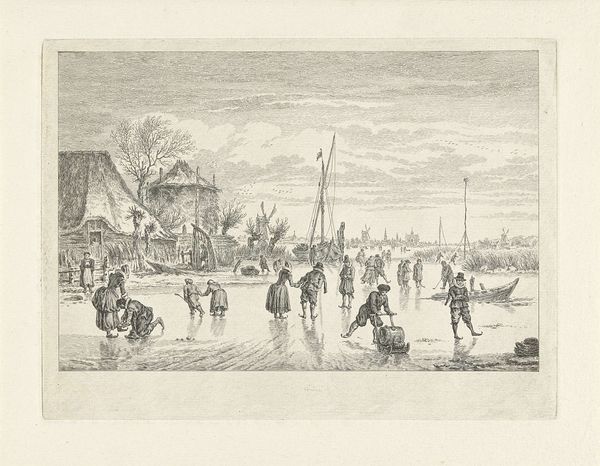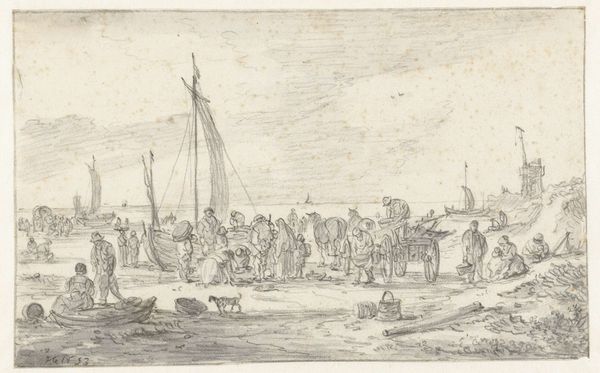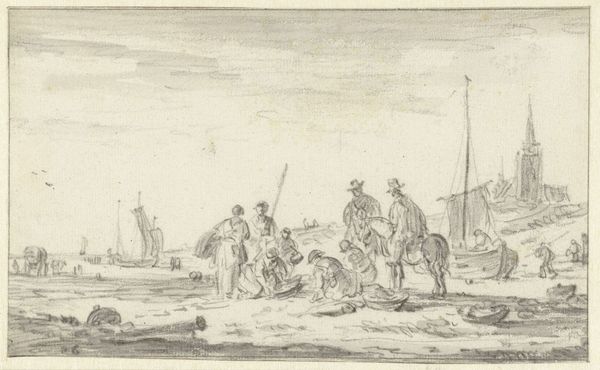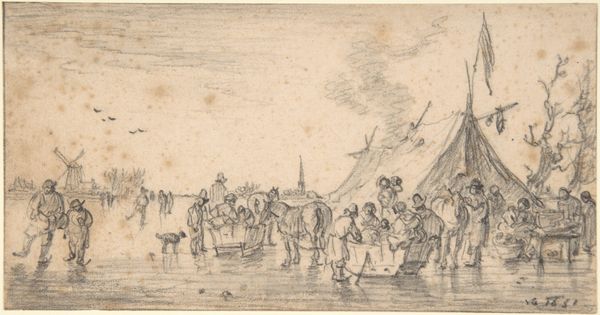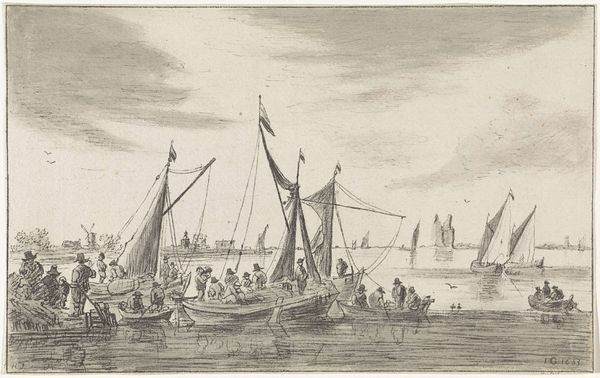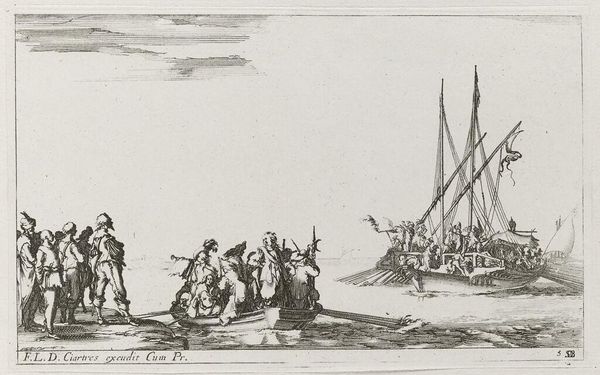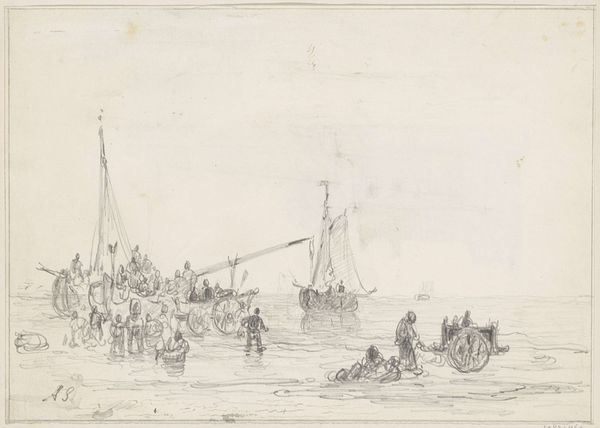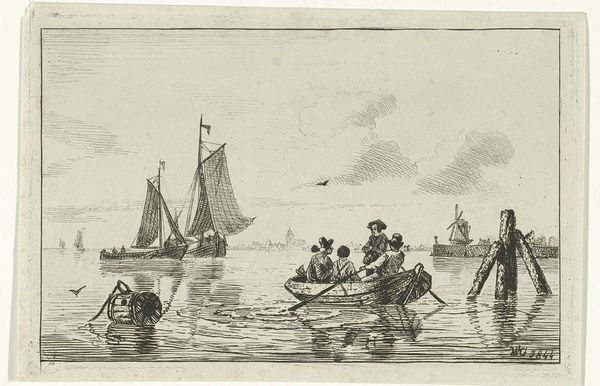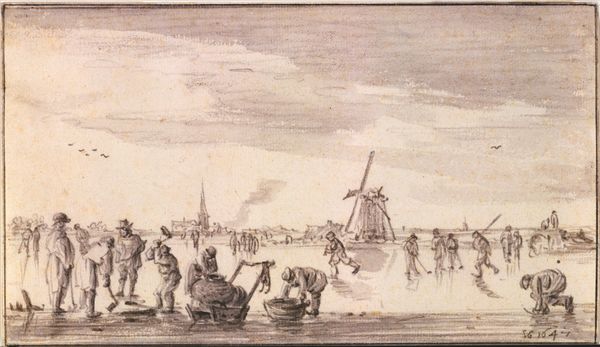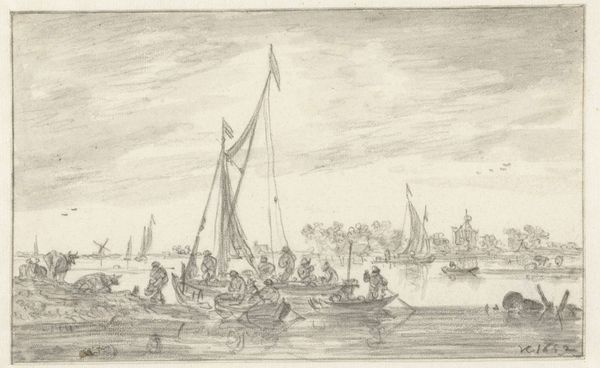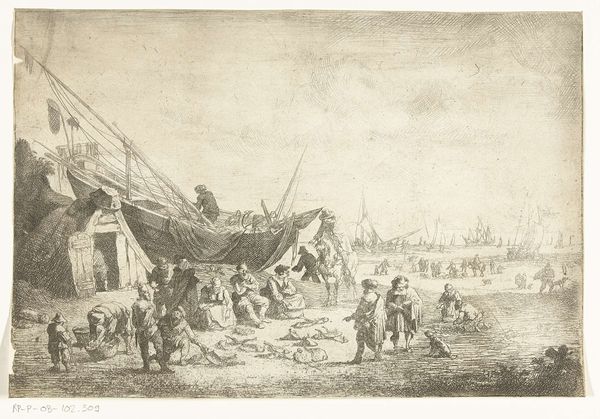
drawing, pencil
#
drawing
#
dutch-golden-age
#
pen sketch
#
landscape
#
pencil
#
sketchbook drawing
#
cityscape
#
genre-painting
#
realism
Dimensions: height 120 mm, width 202 mm
Copyright: Rijks Museum: Open Domain
Curator: This sketch, rendered in pencil, pen and gray ink, is entitled "IJsvermaak op een brede rivier", which translates to "Ice Skating on a Wide River." Jan van Goyen created this genre scene in 1653. Editor: There's a coldness that emanates from this drawing, even just in the limited tonal range. I’m also immediately drawn to the material properties suggested: the slick, glassy surface of the ice, the coarse cloth of the figures’ garments, even the smoke seems gritty. Curator: It evokes a quintessential Dutch winter scene, capturing a moment of leisure. But if you look closely at all those people populating the landscape, I notice they are busily occupied. Winter for the Dutch often signifies commerce and travel along waterways when frozen over. Editor: Precisely. The means of transportation becomes novel and changes. Here, boats slide across the frozen water rather than floating in it; the social utility shifts from sailing to skating or pulling others on sleds. Van Goyen seems interested in showing us the seasonal occupation that dictates a different usage of those materials. Curator: These activities symbolize more than mere utility; they carry strong cultural and social implications. The ice, often a symbol of danger and fragility, here transforms into a place for communal gathering, suggesting resilience in the face of harsh nature, in what some have called a "frozen" Golden Age of painting. Editor: So much cultural import derived from simple tools--sleds, skates, even the winter clothes they sport speak of functional adaptation and economic survival within very specific weather constraints. We understand the culture via how they respond materially. Curator: Absolutely, we find how cultural values shape artistic expression. A seemingly straightforward scene reveals complex ties to the Dutch experience, told economically using only the tools needed. Editor: Indeed, a study in how an artist uses basic means to showcase adaptation to environmental and economic needs, reflecting their culture to the very last, economical line.
Comments
No comments
Be the first to comment and join the conversation on the ultimate creative platform.
